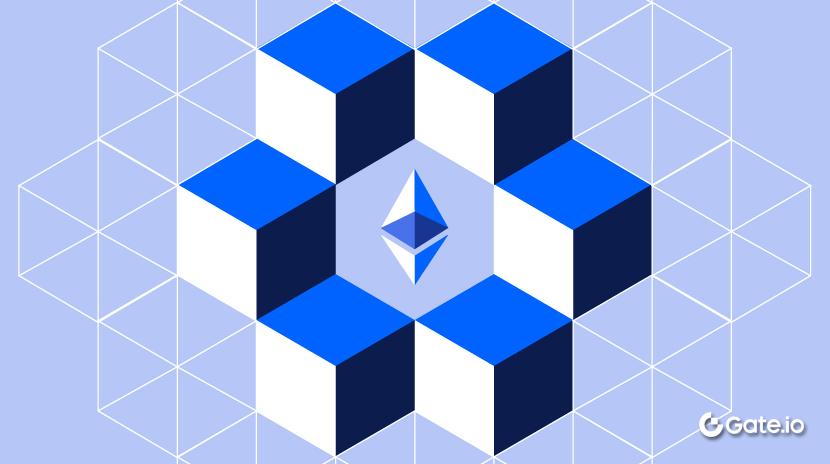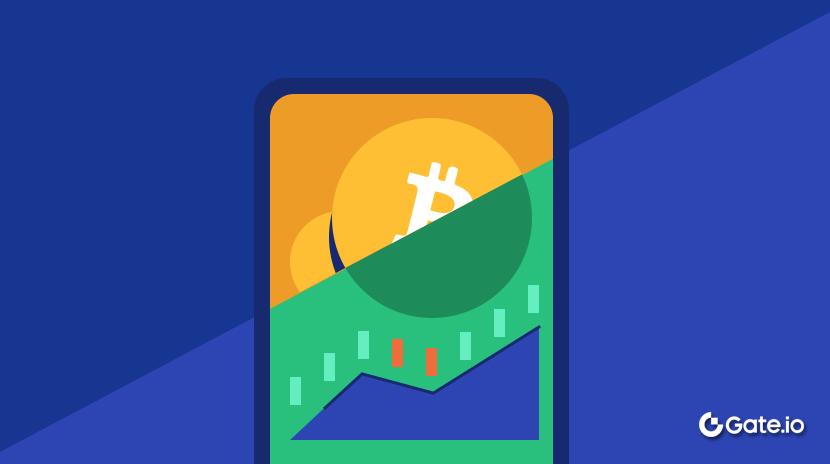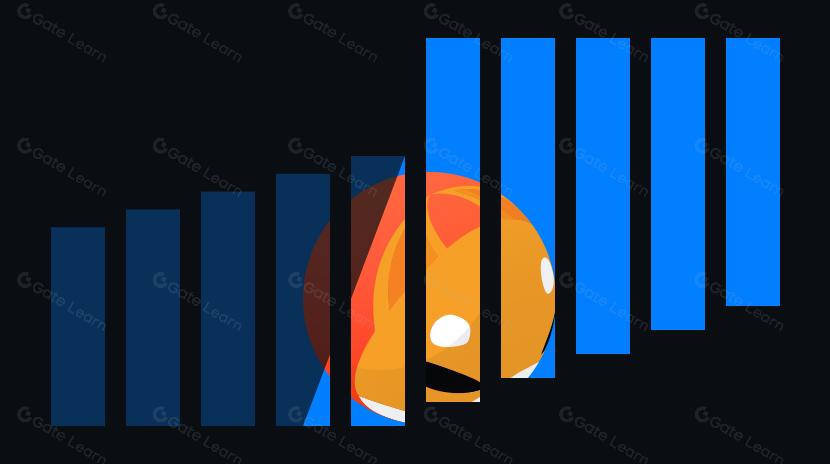Penelitian Gate: Volume Solana DEX Melampaui Ethereum untuk Peringkat Pertama, Eliza Labs Meluncurkan Platform Agen AI Auto-Fun
Abstrak
- Harga Bitcoin tetap stabil dalam 24 jam terakhir, diperdagangkan seharga $85,284; Ethereum naik 0.27% menjadi $1,587.17.
- Pasar DeFi kehilangan hampir $49 miliar dalam kapitalisasi pasar selama Q1.
- Biaya transaksi Ethereum turun ke level terendah lima tahun karena aktivitas on-chain tetap lesu.
- Volume perdagangan DEX Solana selama 7 hari mencapai $16.2 miliar, melampaui Ethereum untuk memimpin semua blockchain.
- Circle Research memperkenalkan Protokol Pengembalian Dana, membawa mekanisme pengembalian dana ke pembayaran stablecoin.
- Kementerian Keuangan Slovenia mengusulkan rancangan undang-undang untuk memberlakukan pajak sebesar 25% pada transaksi kripto.
Analisis Pasar
- BTCHarga Bitcoin tetap tidak banyak berubah dalam 24 jam terakhir, saat ini diperdagangkan pada $84,927. Grafik menunjukkan BTC telah mengonsolidasikan dalam kisaran $83,154 hingga $86,136 dalam beberapa hari terakhir. Harga saat ini berada di atas MA5 dan MA30, sedikit di bawah MA10, dan tetap berada di zona di mana rata-rata bergerak jangka pendek berkumpul. Dalam jangka pendek, BTC berfluktuasi di sekitar tiga rata-rata bergerak ini tanpa menembus resistensi atas, menunjukkan konsolidasi kisaran sempit. Volume perdagangan tetap rendah tanpa tekanan beli maupun jual yang jelas, mencerminkan sentimen pasar yang hati-hati. Indikator MACD menunjukkan garis cepat dan lambat mengambang dekat sumbu nol dengan volatilitas histogram yang melemah, menunjukkan momentum netral dan arah jangka pendek yang tidak jelas.

- EtherHarga Ethereum mengalami kenaikan yang sedang sebesar 0,27% dalam 24 jam terakhir, saat ini berada di $1.587,17. Grafik menunjukkan ETH secara perlahan berkonvergensi dalam pola segitiga menurun, diperdagangkan di atas level dukungan kunci di $1.544,55. Penurunan terus menerus dari puncak-puncak pendek menunjukkan tekanan bearish yang berlanjut. Harga mendekati puncak segitiga, menunjukkan potensi terjadinya breakout. ETH berayun dekat dengan MA5, MA10, dan MA30, dengan ketiga garis tersebut saling terkait - menandakan kebuntuan antara bullish dan bearish tanpa tren yang jelas. Aktivitas perdagangan tetap rendah, tanpa lonjakan volume yang signifikan, mencerminkan ketidakpastian pasar yang tinggi. Garis MACD mendekati sumbu nol dan terus berkonvergensi, dengan pergerakan histogram minimal, menunjukkan momentum yang melemah dan kurangnya sinyal tren jangka pendek.

- ETFMenurut SoSoValue, ETF Bitcoin spot AS mengalami arus masuk bersih sebesar $107 juta pada 17 April; ETF Ethereum spot AS tidak menunjukkan pergerakan modal. Data per 18 April, 12:00 PM (UTC+8)[3][4].
- Altcoin — Sektor seperti Ekosistem Bittensor, Perpetuals, dan Peluncur AI Agen melihat kenaikan masing-masing sebesar +9,7%, +6,9%, dan +6,2%[5].
- Indeks Saham ASPada 17 April, S&P 500 naik 0,13%, sementara Dow Jones turun 1,33% dan Nasdaq turun 0,13%[6].
- Emas Spot— Emas spot dihargai sebesar $3,327.11 per ons, turun 0.48% pada hari itu (per April 18, 10:00 AM UTC+8)[7].
- Indeks Rasa Takut & Keserakahan— Indeks Ketakutan dan Keserakahan membaca 33, menunjukkan keadaan ketakutan di pasar[8].
Pemain Teratas
Menurut data pasar Gate.com[9], altcoin dengan performa terbaik dalam 24 jam terakhir, berdasarkan volume perdagangan dan pergerakan harga, adalah sebagai berikut:

T (Threshold)— Kenaikan harian sekitar 43,71%, dengan kapitalisasi pasar beredar sebesar $208 juta.
Threshold (T) adalah jaringan infrastruktur kriptografi terdesentralisasi yang terbentuk dari penggabungan Keep Network dan NuCypher pada tahun 2022. Tujuannya adalah menyediakan primitif kriptografi seperti perlindungan privasi, enkripsi proksi ulang (PRE), dan tandatangan ambang (TSS) untuk dApps. Token asli T memiliki fungsi utilitas dan tata kelola: digunakan untuk staking dan menjalankan layanan jaringan (seperti jembatan lintas-rantai tBTC), dan memungkinkan pengguna untuk berpartisipasi dalam tata kelola DAO dan proses pemungutan suara yang mempengaruhi keputusan jaringan dan alokasi sumber daya[10].
Lonjakan harga $T baru-baru ini secara utama didorong oleh pengumuman dan pelaksanaan rencana pembelian kembali token strategis. Rencana ini mencakup menghentikan penjualan token $T dan memulai pembelian kembali tahap pertama sebanyak 30 juta token. Hal ini mengirim sinyal kuat bahwa tim proyek sedang mengambil tindakan nyata untuk mengurangi pasokan token, mengendalikan inflasi, dan memulihkan kepercayaan pasar.
STIK (Staika)— Kenaikan harian sekitar 47,52%, dengan kapitalisasi pasar beredar sebesar $145 juta.
Staika (STIK) adalah platform manajemen aset digital yang beroperasi di blockchain Solana. Didirikan pada tahun 2022, tujuannya adalah membangun ekosistem terintegrasi yang mencakup dompet multi-rantai, mekanisme Move-to-Earn (M2E), Play-to-Earn (P2E), dan pasar NFT terpercaya. Platform ini menawarkan pengalaman pengguna Web3 dengan partisipasi berbasis imbalan melalui fitur seperti aplikasi imbalan kebugaran gazaGO dan game berthemes eco defenGO[11].
Pendorong utama dari reli harga ini adalah pengumuman Staika pada pertengahan April mengenai pengungkapan sirkulasi token yang transparan. Menurut pernyataan resmi, Staika mengungkapkan sirkulasi token dan status pembukaan kunci pada tanggal 16 April 2025, beserta semua alamat terkait dan catatan transaksi—menunjukkan tingkat transparansi dan kesadaran regulasi yang tinggi.
AERGO (Aergo)— Kenaikan harian sekitar 41,52%, dengan kapitalisasi pasar beredar sebesar $115 juta.
Aergo (AERGO) adalah platform blockchain hibrida sumber terbuka yang dirancang untuk perusahaan dan pengembang, dikembangkan oleh perusahaan teknologi blockchain Korea Selatan, Blocko. Ini mendukung kontrak pintar yang ditulis dalam Lua dan SQL, dan memiliki arsitektur rantai publik-privat hibrida untuk kinerja dan fleksibilitas. Mainnet beroperasi pada mekanisme konsensus BFT-DPoS, sementara rantai privat menggunakan algoritma RAFT—membuatnya cocok untuk aplikasi perusahaan seperti DeFi, pelacakan rantai pasokan, manajemen identitas, dan NFT[12].
Kenaikan harga terbaru terutama disebabkan oleh pengumuman kemitraan Aergo dengan penyedia penjagaan BitGo, yang secara signifikan meningkatkan kepercayaan pasar terhadap keamanan dan keselarasan regulasinya. Pada 16 April, Aergo secara resmi mengumumkan BitGo sebagai "mitra penjagaan resmi"-nya, yang berarti token AERGO akan mendapatkan manfaat dari layanan penjagaan berstandar institusi. Mengingat keamanan penjagaan merupakan ambang batas kunci untuk partisipasi institusional dalam crypto, langkah ini dianggap sebagai langkah besar menuju komersialisasi berskala besar.
Sorotan Data
Biaya transaksi Ethereum turun ke level terendah dalam lima tahun di tengah aktivitas on-chain yang lesu
Data terbaru menunjukkan bahwa biaya transaksi rata-rata di jaringan Ethereum telah turun menjadi sekitar $0.168, menandai level terendah sejak 2020. Analisis on-chain mengaitkan penurunan ini terutama pada penurunan aktivitas pengguna, dengan penurunan yang signifikan dalam transfer ETH dan interaksi kontrak pintar.
Biaya yang lebih rendah secara langsung mencerminkan menurunnya permintaan jaringan. Ketika kepadatan transaksi on-chain menurun, pengguna tidak lagi perlu membayar biaya tinggi untuk konfirmasi prioritas, menyebabkan penurunan rata-rata biaya gas. Meskipun hal ini mungkin sementara menarik beberapa pengguna kembali ke mainnet Ethereum, ini juga mengurangi insentif validator, yang berpotensi memengaruhi keamanan dan aktivitas jangka panjang jaringan.
Lingkungan makroekonomi yang lebih luas juga telah meredam sentimen pasar. Sejak AS mengumumkan putaran tarif tinggi baru pada awal April, baik pasar tradisional maupun pasar kripto telah mengalami koreksi. ETH telah turun lebih dari 12% dalam dua minggu terakhir dan kini berada di bawah $1,600.
Selain itu, Ethereum dijadwalkan untuk menjalani upgrade jaringan yang bernama “Pectra” pada 7 Mei, yang diharapkan dapat meningkatkan efisiensi jaringan dan mengurangi biaya transaksi. Fitur utamanya termasuk memungkinkan stablecoin digunakan untuk pembayaran gas dan meningkatkan batas staking. Pasar sedang memperhatikan dengan seksama apakah upgrade ini akan membantu memulihkan ekosistem Ethereum[13].

Pasar DeFi kehilangan hampir $49 miliar di Q1
Pada kuartal pertama 2025, di tengah ketegangan perdagangan global dan ketidakpastian makroekonomi, pasar kripto memasuki fase koreksi. Total nilai terkunci DeFi (TVL) menyusut 27,5% selama kuartal itu, dengan kerugian mencapai sekitar $48,9 miliar. Harga ETH sendiri turun dari $3.336 menjadi $1.800, mengakibatkan kerugian TVL sekitar $40 miliar. Akibatnya, pangsa pasar DeFi Ethereum turun dari 63,5% menjadi 56,6%. Meskipun terjadi penurunan, tidak ada eksodus pengguna dalam skala besar, karena penurunan ini sebagian besar disebabkan oleh depresiasi altcoin yang luas.
Saat dominasi Ethereum melemah, rantai-rantai yang muncul seperti Solana dan Base dengan cepat mengisi kekosongan tersebut. Meskipun terjadi penarikan harga token, aktivitas DEX Solana meningkat, dengan volume perdagangan spot mencapai 39,6% dari total pada Q1, memimpin seluruh pasar. Proyek baru Berachain juga mengesankan, mencapai TVL $5,2 miliar dalam beberapa bulan, menjadikannya rantai DeFi terbesar keenam. Sementara itu, sektor memecoin mengalami krisis kepercayaan—sejak insiden “Libra”, penciptaan token harian di platform Pump.fun merosot 56,3%[14].
Volume perdagangan Solana DEX mencapai $16.2 miliar dalam 7 hari, melampaui Ethereum untuk memimpin semua rantai
Dalam peringkat volume perdagangan pertukaran terdesentralisasi (DEX) 7 hari terakhir, Solana mencatat total volume perdagangan sebesar $16.201 miliar, menempati posisi teratas di semua ekosistem lainnya. Volume mingguan naik sebesar 15.35% dibandingkan dengan minggu sebelumnya. Solana mengungguli Ethereum ($12.508 miliar), BSC ($6.506 miliar), Base ($4.762 miliar), dan Arbitrum ($3.548 miliar).
Meskipun Ethereum masih mendominasi dalam total nilai yang terkunci (TVL)—dengan $7.088 miliar dalam TVL DEX dibandingkan dengan $2.271 miliar dari Solana—aktivitas perdagangan jangka pendek menunjukkan likuiditas yang cepat dan pergerakan pengguna di berbagai rantai. Berkat throughput yang tinggi, latensi rendah, dan biaya transaksi yang rendah, Solana terus menarik minat pengguna dan pengembang ke ruang DeFi. Arsitektur yang dapat diskalakan memberikan lingkungan ideal untuk aplikasi terdesentralisasi. Protokol DEX teratas di Solana—termasuk Jupiter, Raydium, dan Orca—telah mendapatkan daya tarik signifikan karena mesin pencocokan yang efisien, dukungan likuiditas, dan pengalaman pengguna yang lancar[15].

Analisis Sorotan
Eliza Labs meluncurkan Auto-Fun, platform Peluncur agen AI tanpa kode
Eliza Labs telah meluncurkan platform peluncuran agen AI tanpa kode bernama "Auto-Fun," yang bertujuan untuk mengatasi ketidaksesuaian insentif dan masalah penangkapan nilai yang umumnya terlihat dalam proyek AI saat ini. Platform ini memperkenalkan model tokenomics "lebih adil dari adil" yang inovatif, yang mengharuskan pengembang membayar biaya saat peluncuran proyek, yang kemudian dialokasikan ke kas DAO untuk menyediakan pendanaan berkelanjutan bagi ekosistem. Selain itu, Auto-Fun mengusulkan mekanisme seperti staking, sistem reputasi, dan proses review berbasis komunitas untuk memastikan kualitas proyek dan mendorong partisipasi jangka panjang.
Inisiatif ini mengikuti tantangan yang dihadapi oleh Eliza Labs dengan model token sebelumnya. Sebelumnya, tim meluncurkan token AI16Z menggunakan model “fair mint” yang mengesampingkan tim pendiri dari alokasi awal. Akibatnya, proyek kekurangan pendanaan berkelanjutan. Meskipun token pernah mencapai kapitalisasi pasar $2 miliar, ketiadaan mekanisme penangkapan nilai menyebabkan penurunan tajam menjadi $300 juta tahun ini, mendorong tim untuk meninjau ulang desain ekonominya.
Sementara model "peluncuran yang adil" tradisional dapat menghasilkan kegembiraan komunitas awal, seringkali gagal memberi insentif kepada pengembang dan pemegang jangka panjang, menghambat pembangunan berkelanjutan. Dengan memperkenalkan biaya peluncuran, staking, dan kerangka kerja berbasis reputasi, Auto-Fun diharapkan dapat membantu membangun kembali kepercayaan pasar, menarik pengguna baru, dan mendorong konsensus yang lebih kuat dalam komunitas [16].
Circle Research mengungkapkan Protokol Pengembalian Dana, membawa pengembalian dana ke pembayaran stablecoin
Circle Research telah merilis Protokol Pengembalian, kontrak pintar inovatif yang dirancang untuk mengatasi kurangnya mekanisme pengembalian dana dan penyelesaian sengketa dalam pembayaran stablecoin tradisional. Protokol ini memungkinkan penyelesaian sengketa on-chain non-kustodial dan fungsi escrow untuk transaksi stablecoin ERC-20. Ini memungkinkan periode kunci, mendukung pengembalian dana berbasis arbitrase, dan mengizinkan penarikan dini berdasarkan persetujuan off-chain, semuanya sambil meminimalkan ketergantungan pada pihak ketiga terpusat. Dirancang untuk pengembang, protokol ini bertujuan untuk meningkatkan komposabilitas dan transparansi perdagangan on-chain, membuat pembayaran stablecoin lebih aman dan lebih dapat disesuaikan untuk penggunaan dunia nyata.
Protokol Pengembalian dana beroperasi melalui empat langkah inti: pembayaran, pengembalian, penarikan, dan penarikan dana awal. Selama pembayaran, token dikirim ke kontrak pintar daripada langsung ke penerima. Dalam kasus perselisihan, penerima dapat mengeluarkan pengembalian secara langsung atau seorang arbiter dapat turun tangan. Setelah periode penguncian, penerima dapat menarik dana yang tersisa. Protokol ini juga memungkinkan penarikan dana awal jika penerima membayar biaya layanan. Keuntungan utamanya adalah sifat non-kustodialnya—arbiter secara ketat terbatas untuk mengirim dana ke penerima yang telah ditetapkan sebelumnya atau mengembalikannya kepada pengirim asli, tanpa kekuatan untuk mengalihkan dana ke tempat lain atau menguncinya secara tak terbatas. Hal ini menjaga desentralisasi sambil memperkenalkan penyelesaian sengketa yang mirip dengan yang ditemukan dalam sistem pembayaran tradisional.
Transaksi stablecoin tradisional berfungsi seperti uang tunai—setelah dikirim, hampir tidak mungkin untuk dibalik. Hal ini sangat membatasi kegunaannya dalam skenario bisnis yang memerlukan kepercayaan dan penanganan sengketa. Protokol Circle dengan cerdik mengintegrasikan mekanisme penyelesaian sengketa mirip kartu kredit sambil tetap menjaga integritas terdesentralisasi dari blockchain. Namun, tantangan potensial seperti arbitrator jahat, kompleksitas alamat pengembalian dana, dan biaya gas perlu dikelola dengan hati-hati dalam implementasi dunia nyata.
Kementerian Keuangan Slovenia mengusulkan pajak 25% pada transaksi kripto
Pada 17 April 2025, Kementerian Keuangan Slovenia mengungkapkan rancangan undang-undang pajak baru yang mengusulkan tarif pajak sebesar 25% pada transaksi kripto ketika penduduk mengonversi aset digital menjadi mata uang fiat atau menggunakannya untuk barang dan jasa. Rancangan tersebut kini dibuka untuk konsultasi publik hingga 5 Mei. Jika disetujui, undang-undang diharapkan mulai berlaku pada 1 Januari 2026.
Menurut Kementerian, pajak yang diusulkan ini tidak akan berlaku untuk perdagangan crypto-to-crypto atau transfer dompet antar akun yang dimiliki oleh pengguna yang sama. Basis kena pajak akan dihitung berdasarkan margin keuntungan antara pembelian dan penjualan, dan wajib pajak akan diminta untuk mencatat semua transaksi dan melaporkan keuntungan dalam pengajuan pajak tahunan mereka. Menteri Keuangan Klemen Boštjančič menyatakan bahwa pembebasan pajak saat ini untuk perdagangan crypto pribadi "tidak dapat dibenarkan," dan menekankan bahwa "sebagai salah satu instrumen keuangan paling spekulatif, aset crypto tidak boleh dikecualikan dari sistem pajak."
Usulan ini menandai langkah penting dalam upaya Slovenia untuk mengintegrasikan aset kripto ke dalam kerangka fiskalnya. Dengan secara eksplisit mendefinisikan konversi fiat dan pengeluaran sebagai peristiwa yang dikenai pajak, Kementerian bertujuan untuk membawa aktivitas kripto di bawah pengawasan keuangan dan mengurangi lingkup transaksi 'pasar abu-abu'. Jika disetujui dan diundangkan pada tahun 2026, Slovenia akan beralih dari model pajak ringan saat ini (umumnya 10%) ke salah satu rezim perpajakan kripto yang lebih ketat di UE. Perkembangan ini juga mencerminkan strategi lebih luas negara tersebut untuk membentuk kerangka tata kelola aset digital yang komprehensif, mengikuti penerbitan obligasi digital kedaulatan baru-baru ini[18].
Sorotan Pendanaan
Menurut RootData, dua proyek mengumumkan putaran penggalangan dana secara publik dalam 24 jam terakhir, dengan total pendanaan yang diumumkan melebihi $55 juta. Keduanya berada dalam sektor DeFi. Detailnya adalah sebagai berikut[19]:
LayerZeroLayerZero mengamankan $55 juta dalam putaran pendanaan awal yang dipimpin oleh a16z dan Yzi Labs, dengan partisipasi dari Robot Ventures, Spartan Group, dan lainnya. LayerZero adalah protokol interoperabilitas lintas rantai yang dirancang untuk pengiriman pesan ringan antar blockchain. Ini menyediakan pesan yang dapat diandalkan dan aman dengan kekurangpercayaan yang dapat dikonfigurasi. Dana tersebut akan mendukung implementasi global protokol komunikasi lintas rantai, memperluas ekosistem pengembangnya, meningkatkan pemeriksaan keamanan, dan membangun infrastruktur yang diperlukan untuk peluncuran mainnet dan tokenomiknya yang akan datang.
EdgeX LabsEdgeX Labs menyelesaikan putaran pendanaan strategis (jumlah tidak diungkapkan), dengan partisipasi dari Ryze Labs. EdgeX Labs mengoperasikan jaringan komputasi tepi terdesentralisasi yang menawarkan sumber daya komputasi tepi yang aman dan stabil untuk berbagai proyek dan agen AI. Dana tersebut akan mempercepat implementasi node tepi global, mengoptimalkan sistem EdgeX OS, dan memperluas ekosistem aplikasi untuk produk unggulannya, EdgeX AI Agent[21].
Kesempatan Airdrop
Debridge
Debridge adalah sebuah protokol interoperabilitas yang berfokus pada transfer aset dan data lintas rantai. Ini mendukung jaringan blockchain utama seperti Ethereum, Solana, BNB Chain, dan Polygon. Protokol ini menggunakan arsitektur berbasis validator untuk memastikan integritas transaksi dan keamanan, menghindari model kolam likuiditas tradisional demi likuiditas yang dalam dan pengalaman perdagangan dengan slippage rendah. Debridge bertujuan untuk menyediakan infrastruktur komunikasi lintas rantai yang cepat dan handal bagi pengembang dan pengguna, mempromosikan integrasi di seluruh ekosistem multi-rantai.
Saat ini, Debridge sedang menjalankan kampanye airdrop untuk token aslinya, $DBR. Musim 1 telah mengalokasikan 6% dari total pasokan DBR kepada pengguna yang mendapatkan poin melalui protokol sebelum 23 Juli 2024. Periode klaim berlangsung hingga 17 Mei 2025. Musim 2 saat ini sedang berlangsung, memungkinkan pengguna untuk mengumpulkan poin melalui interaksi lintas-rantai dan tugas referral sebagai persiapan untuk airdrop di masa depan.
Bagaimana cara berpartisipasi:
- Musim 1: Hubungkan dompet Anda untuk memeriksa kelayakan. Jika memenuhi syarat, berikan alamat Solana Anda untuk klaim token DBR Anda.
- Musim 2: Transaksi lintas-rantai lengkap. Untuk setiap $1 biaya yang dibayarkan, Anda mendapatkan 100 poin.
- Undang teman untuk bergabung—dapatkan tambahan 25% dari total poin yang terakumulasi untuk setiap referensi yang berhasil.
- Aktif menggunakan fitur-fitur Debridge dan ikuti saluran komunitas resmi untuk tetap terupdate tentang peluang airdrop di masa depan.
Catatan:
Aturan airdrop dan metode partisipasi dapat berubah setiap saat. Pengguna disarankan untuk mengikuti saluran resmi Debridge untuk pembaruan terbaru. Selalu berhati-hati dan lakukan penelitian yang teliti sebelum berpartisipasi. Gate.com tidak menjamin penerbitan hadiah airdrop di masa depan.
Referensi:
- Gate.com,https://www.Gate.com/trade/BTC_USDT
- Gate.com,https://www.Gate.com/trade/ETH_USDT
- SoSoValue,https://sosovalue.xyz/assets/etf/us-btc-spot
- Nilai SoSo,https://sosovalue.xyz/assets/etf/us-eth-spot
- CoinGecko,https://www.coingecko.com/id/categories
- Investasi,https://investing.com/indices/usa-indices
- Investasi,https://investing.com/currencies/xau-usd
- Gate.com,https://www.Gate.com/bigdata
- Gate.com,https://www.Gate.com/price
- X,https://x.com/gigabrain_agent/status/1913059759005344161
- Medium,https://medium.com/staika/staika-stik-token-unlock-and-circulation-as-of-april-2025-94c6f22e1b24
- X,https://x.com/aergo_io/status/1912657308708151363
- Cointelegraph,https://cn.cointelegraph.com/news/ethereum-fees-drop-five-year-low-user-lull
- X,https://x.com/Cointelegraph/status/1912748123501236408
- Defillama,https://defillama.com/dexs/chains
- Cointelegraph,https://cointelegraph.com/news/ai16z-s-eliza-labs-launches-ai-powered-pump-fun-alternative-auto-fun
- Lingkaran,https://www.circle.com/blog/protokol-pengembalian-pembayaran-stabil-non-kustodial-resolusi-sengketa-untuk-pembayaran-stablecoin
- Cointelegraph,https://cointelegraph.com/news/kementerian-keuangan-slovenia-mengusulkan-pajak-25-pada-kripto
- Roodata,https://www.rootdata.com/PenggalanganDana
- X,https://x.com/alive_eth/status/1912899221868396869
- X,https://x.com/EdgexAI/status/1912717775250055650
- Debridge,https://docs.debridge.foundation/faq-airdrop-season-1/eligibility-season-1
Penelitian Gate
Gate Research adalah platform penelitian blockchain dan cryptocurrency yang komprehensif yang menyajikan konten mendalam. Ini meliputi analisis teknis, wawasan topik panas, ulasan pasar, penelitian industri, ramalan tren, dan analisis kebijakan makroekonomi.
Klik di siniuntuk mengunjungi sekarang
Penolakan
Investing di pasar kripto melibatkan risiko tinggi, dan disarankan pengguna melakukan penelitian independen dan memahami sepenuhnya sifat aset dan produk yang mereka beli sebelum membuat keputusan investasi. Gate.com tidak bertanggung jawab atas kerugian atau kerusakan yang disebabkan oleh keputusan investasi tersebut.
Artikel Terkait

Bagaimana Melakukan Penelitian Anda Sendiri (DYOR)?

Bagaimana Mempertaruhkan ETH?

Analisis Teknis adalah apa?

Top 10 Platform Perdagangan Koin Meme

Apa yang Dimaksud dengan Analisis Fundamental?


